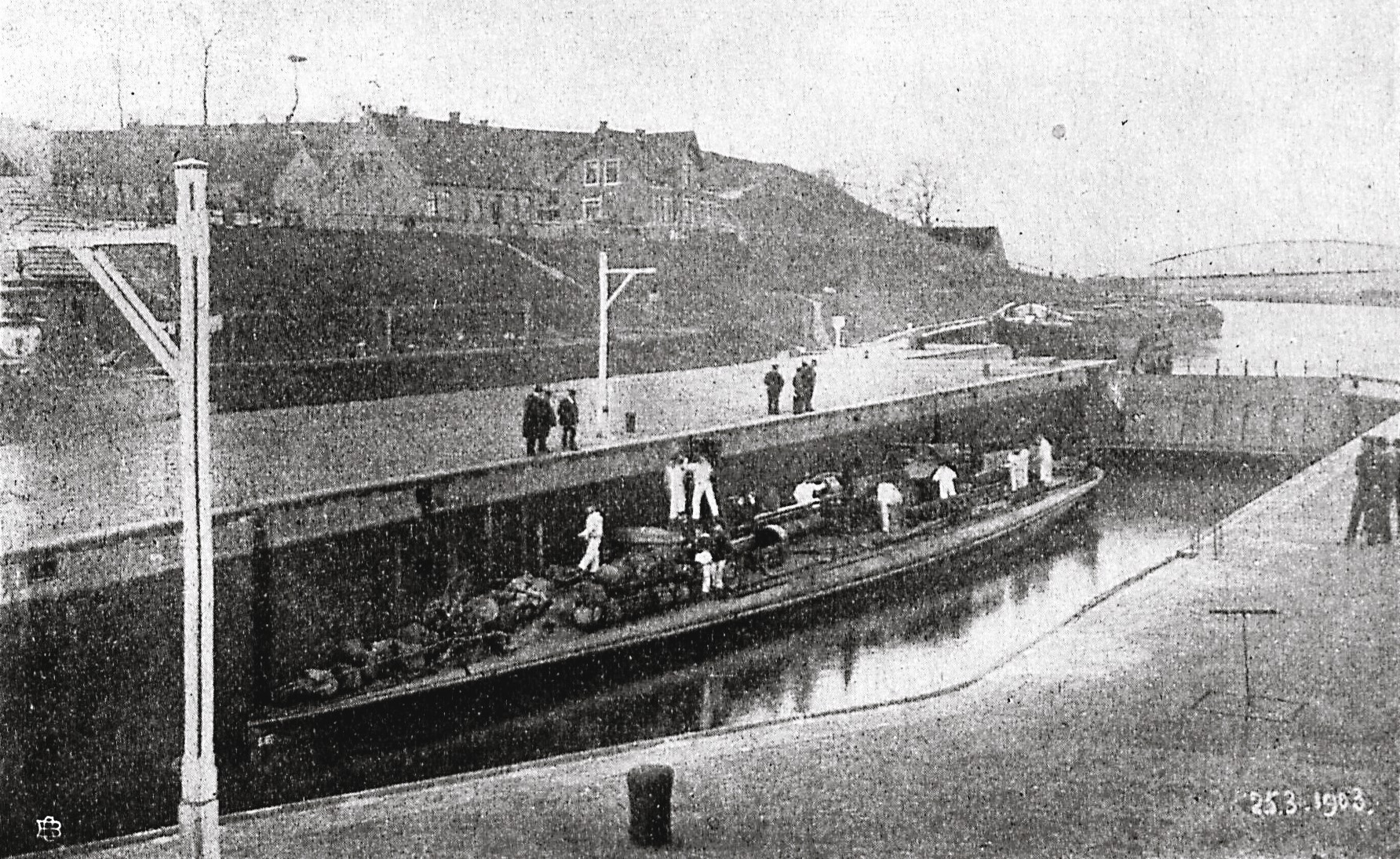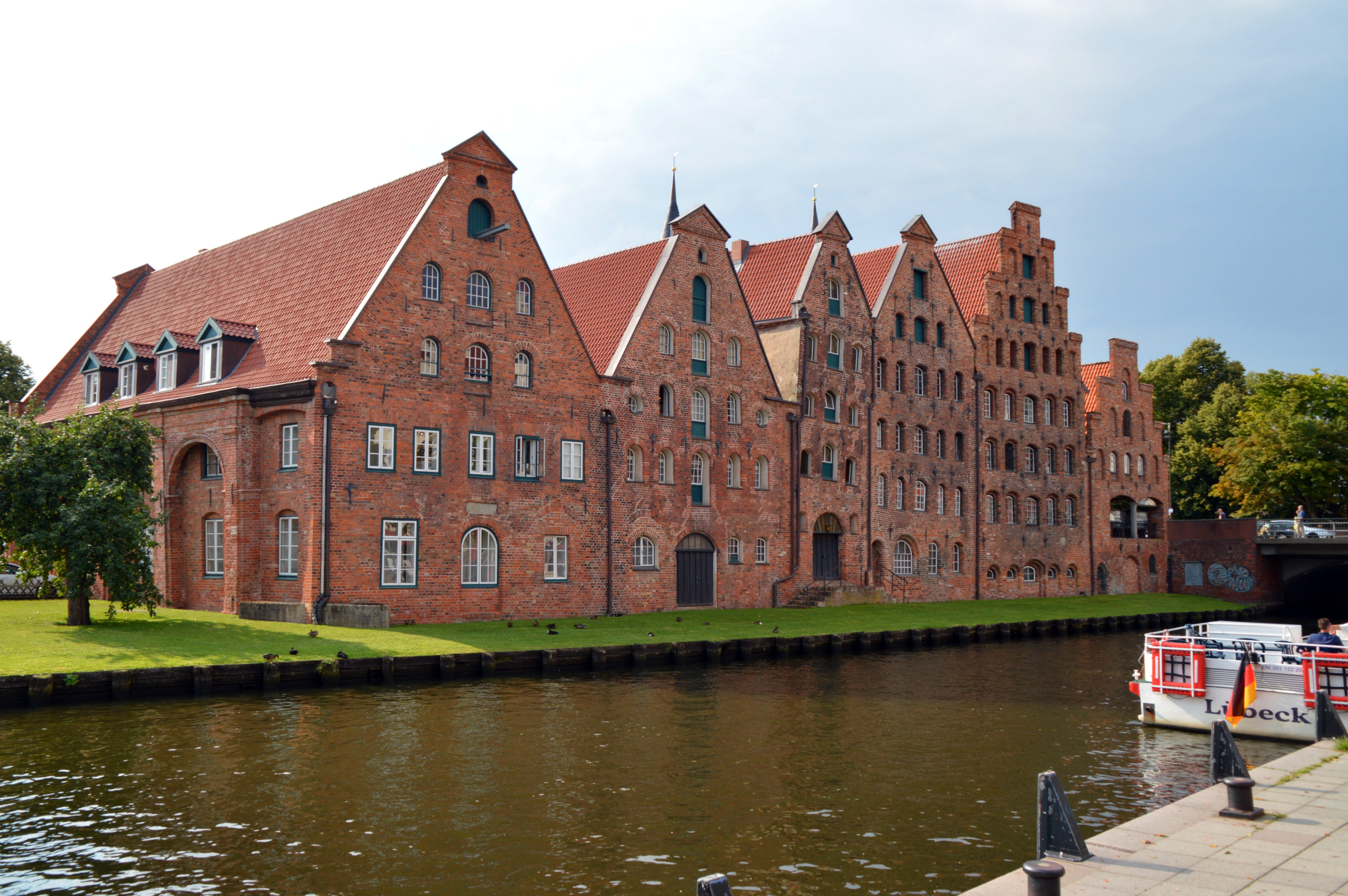|
Stecknitz Canal
The Stecknitz Canal (german: Stecknitzfahrt) was an artificial waterway in northern Germany which connected Lauenburg and Lübeck on the Old Salt Route by linking the tiny rivers Stecknitz (a tributary of the Trave) and Delvenau (a tributary of the Elbe), thus establishing an inland water route across the drainage divide from the North Sea to the Baltic Sea. Built between 1391 and 1398, the Stecknitz Canal was the first European summit-level canal and one of the earliest artificial waterways in Europe. In the 1890s the canal was replaced by an enlarged and straightened waterway called the Elbe–Lübeck Canal, which includes some of the Stecknitz Canal's watercourse. The original artificial canal was deep and wide; the man-made segment ran for , with a total length of including the rivers it linked. The canal included seventeen wooden locks (of which the ''Palmschleuse'' at Lauenburg still exists) that managed the elevation difference between its endpoints and the highest ... [...More Info...] [...Related Items...] OR: [Wikipedia] [Google] [Baidu] |
Elbe–Lübeck Canal
The Elbe–Lübeck Canal () (also known as the Elbe–Trave Canal) is an canal, artificial waterway in eastern Schleswig-Holstein, Germany. It connects the rivers Elbe and Trave, creating an inland water route across the drainage divide from the North Sea to the Baltic Sea. The canal includes seven Navigation lock, locks and runs for a length of between the cities of Lübeck in the north and Lauenburg in the south by way of the Mölln lakes. The modern canal was built in the 1890s to replace the Stecknitz Canal, a medieval watercourse linking the same two rivers. Preceding canal The older Stecknitz Canal had first connected Lauenburg and Lübeck on the Old Salt Route by linking the tiny rivers Stecknitz (a tributary of the Trave) and Delvenau (a tributary of the Elbe). Built between 1391 and 1398, the Stecknitz Canal was the first European summit-level canal and one of the earliest artificial waterways in Europe. History After German unification in the late nineteenth century, ... [...More Info...] [...Related Items...] OR: [Wikipedia] [Google] [Baidu] |
Herring
Herring are forage fish, mostly belonging to the family of Clupeidae. Herring often move in large schools around fishing banks and near the coast, found particularly in shallow, temperate waters of the North Pacific and North Atlantic Oceans, including the Baltic Sea, as well as off the west coast of South America. Three species of ''Clupea'' (the type genus of the herring family Clupeidae) are recognised, and comprise about 90% of all herrings captured in fisheries. The most abundant of these species is the Atlantic herring, which comprises over half of all herring capture. Fish called herring are also found in the Arabian Sea, Indian Ocean, and Bay of Bengal. Herring played an important role in the history of marine fisheries in Europe, and early in the 20th century, their study was fundamental to the development of fisheries science. These oily fish also have a long history as an important food fish, and are often salted, smoked, or pickled. Herring are also known as "sil ... [...More Info...] [...Related Items...] OR: [Wikipedia] [Google] [Baidu] |
Cereal
A cereal is any Poaceae, grass cultivated for the edible components of its grain (botanically, a type of fruit called a caryopsis), composed of the endosperm, Cereal germ, germ, and bran. Cereal Grain, grain crops are grown in greater quantities and provide more food energy worldwide than any other type of crop and are therefore Staple food, staple crops. They include wheat, rye, Oat, oats, and barley. Edible grains from other plant families, such as buckwheat, quinoa and Salvia hispanica, chia, are referred to as pseudocereals. In their unprocessed whole grain form, cereals are a rich source of vitamins, Mineral (nutrient), minerals, carbohydrates, fats, oils, and Protein (nutrient), protein. When processed by the removal of the bran and germ the remaining endosperm is mostly carbohydrate. In some Developing country, developing countries, grain in the form of rice, wheat, millet, or maize constitutes a majority of daily sustenance. In Developed country, developed countries, c ... [...More Info...] [...Related Items...] OR: [Wikipedia] [Google] [Baidu] |
Salzspeicher
The Salzspeicher (salt storehouses), of Lübeck, Germany, are six historic brick buildings on the Upper Trave River next to the Holstentor (the western city gate). Built in the 16th–18th centuries, the houses stored salt that was mined near Lüneburg and brought to Lübeck over the Stecknitz Canal. The salt was then shipped to several ports in the Baltic region, where the commodity was relatively rare, but was in high demand for the preservation of food. The salt trade from the late Middle Ages onward was a major reason for the power of Lübeck and the Hanseatic League. In the course of the centuries, the houses were adapted for the storage of different goods, such as cloth, grain and wood. Part of the complex was used as the residence of Count Orlok in the classic horror movie ''Nosferatu, eine Symphonie des Grauens''Loy Arnold, Michael Farin, Hans Schmid: Nosferatu. Eine Symphonie des Grauens. München 2000 (Filmhandbuch mit zahlreichen Zusatzinformationen u. Szenenbildern) ... [...More Info...] [...Related Items...] OR: [Wikipedia] [Google] [Baidu] |
Lüneburg
Lüneburg (officially the ''Hanseatic City of Lüneburg'', German: ''Hansestadt Lüneburg'', , Low German ''Lümborg'', Latin ''Luneburgum'' or ''Lunaburgum'', Old High German ''Luneburc'', Old Saxon ''Hliuni'', Polabian ''Glain''), also called Lunenburg ( ) in English, is a town in the German state of Lower Saxony. It is located about southeast of another Hanseatic city, Hamburg, and belongs to that city's wider metropolitan region. The capital of the district which bears its name, it is home to roughly 77,000 people. Lüneburg's urban area, which includes the surrounding communities of Adendorf, Bardowick, Barendorf and Reppenstedt, has a population of around 103,000. Lüneburg has been allowed to use the title " Hansestadt" (''Hanseatic Town'') in its name since 2007, in recognition of its membership in the former Hanseatic League. Lüneburg is also home to Leuphana University. History ImageSize = width:1050 height:100 PlotArea = width:1000 height:50 left:50 bottom ... [...More Info...] [...Related Items...] OR: [Wikipedia] [Google] [Baidu] |
Salt
Salt is a mineral composed primarily of sodium chloride (NaCl), a chemical compound belonging to the larger class of salts; salt in the form of a natural crystalline mineral is known as rock salt or halite. Salt is present in vast quantities in seawater. The open ocean has about of solids per liter of sea water, a salinity of 3.5%. Salt is essential for life in general, and saltiness is one of the basic human tastes. Salt is one of the oldest and most ubiquitous food seasonings, and is known to uniformly improve the taste perception of food, including otherwise unpalatable food. Salting, brining, and pickling are also ancient and important methods of food preservation. Some of the earliest evidence of salt processing dates to around 6,000 BC, when people living in the area of present-day Romania boiled spring water to extract salts; a salt-works in China dates to approximately the same period. Salt was also prized by the ancient Hebrews, Greeks, Romans, Byzantines, ... [...More Info...] [...Related Items...] OR: [Wikipedia] [Google] [Baidu] |
Barge
Barge nowadays generally refers to a flat-bottomed inland waterway vessel which does not have its own means of mechanical propulsion. The first modern barges were pulled by tugs, but nowadays most are pushed by pusher boats, or other vessels. The term barge has a rich history, and therefore there are many other types of barges. History of the barge Etymology "Barge" is attested from 1300, from Old French ''barge'', from Vulgar Latin ''barga''. The word originally could refer to any small boat; the modern meaning arose around 1480. ''Bark'' "small ship" is attested from 1420, from Old French ''barque'', from Vulgar Latin ''barca'' (400 AD). The more precise meaning of Barque as "three-masted sailing vessel" arose in the 17th century, and often takes the French spelling for disambiguation. Both are probably derived from the Latin ''barica'', from Greek ''baris'' "Egyptian boat", from Coptic ''bari'' "small boat", hieroglyphic Egyptian D58-G29-M17-M17-D21-P1 and similar ''b ... [...More Info...] [...Related Items...] OR: [Wikipedia] [Google] [Baidu] |
Canal
Canals or artificial waterways are waterways or engineered channels built for drainage management (e.g. flood control and irrigation) or for conveyancing water transport vehicles (e.g. water taxi). They carry free, calm surface flow under atmospheric pressure, and can be thought of as artificial rivers. In most cases, a canal has a series of dams and locks that create reservoirs of low speed current flow. These reservoirs are referred to as ''slack water levels'', often just called ''levels''. A canal can be called a ''navigation canal'' when it parallels a natural river and shares part of the latter's discharges and drainage basin, and leverages its resources by building dams and locks to increase and lengthen its stretches of slack water levels while staying in its valley. A canal can cut across a drainage divide atop a ridge, generally requiring an external water source above the highest elevation. The best-known example of such a canal is the Panama Canal. Many ... [...More Info...] [...Related Items...] OR: [Wikipedia] [Google] [Baidu] |
Eric IV, Duke Of Saxe-Lauenburg
Eric IV of Saxe-Lauenburg (1354 – 21 June 1411 or 1412) was a son of Eric II, Duke of Saxe-Lauenburg and Agnes of Holstein. Life Eric II already involved his son Eric IV young in government affairs. Eric IV succeeded his father in 1368 as Duke of Saxe-Ratzeburg-Lauenburg. Neighbouring territories (Prince-Archbishopric of Bremen, Hamburg, and Schauenburg and Holstein-Kiel) had been at feud with the Saxon dukes Eric II and his cousin Albert V since 1363. In 1378 Prince-Archbishop Albert II reconciled with Eric IV, who had married Albert's niece Sophia. Eric IV and Albert II signed a peace, concluding to settle future disputes – especially on the Saxon exclave Land of Hadeln, neighbouring the prince-archbishopric – without using violence. Between 1392 and 1398 Eric IV carried out the constructions of the Stecknitz Canal, connecting via Elbe and Trave the North Sea with the Baltic Sea. This was the first European canal crossing a drainage divide, and was especially importa ... [...More Info...] [...Related Items...] OR: [Wikipedia] [Google] [Baidu] |
Hanseatic League
The Hanseatic League (; gml, Hanse, , ; german: label=Modern German, Deutsche Hanse) was a medieval commercial and defensive confederation of merchant guilds and market towns in Central and Northern Europe. Growing from a few North German towns in the late 12th century, the League ultimately encompassed nearly 200 settlements across seven modern-day countries; at its height between the 13th and 15th centuries, it stretched from the Netherlands in the west to Russia in the east, and from Estonia in the north to Kraków, Poland in the south. The League originated from various loose associations of German traders and towns formed to advance mutual commercial interests, such as protection against piracy and banditry. These arrangements gradually coalesced into the Hanseatic League, whose traders enjoyed duty-free treatment, protection, and diplomatic privileges in affiliated communities and their trade routes. Hanseatic Cities gradually developed a common legal system governing t ... [...More Info...] [...Related Items...] OR: [Wikipedia] [Google] [Baidu] |








